- Home
- All About Reels
- Baitcaster Reel
Understanding the Modern Baitcaster Reel
Baitcaster reels are the smallest type of conventional reel. Conventional reels designed for freshwater casting are always baitcasters, but the definition when applied to saltwater fishing is pretty vague.
Some saltwater anglers describe level-wind surfcasting reels as baitcasters, whilst others are happy to call all reels of this type traditional reels. Here in the UK we have no such problem - they're all 'multipliers' to us!
Baitcaster reels tend to be wider and sit lower on the rod than conventional reels, to aid the stability of the casting outfit.
My first baitcaster reel was an Abu Ambassadeur 6000c - still made today, but this was a long time ago. Misguidedly, I removed the sleeves from the centrifugal braking system in the belief that it would give me additional distance.
Perhaps it did at times, but I can still remember the frequent birdsnests of biblical proportions and the lost fishing time that went with them.
On this page...
Baitcaster Reel Sizes
Some baitcaster reel manufacturers use a reel size system based on that developed by the Swedish company Abu in their range of Ambassadeur reels, with sizes from 5000 to 10000 like this:~
- 5000 ~ small lure casting reels;
- 6000/6500 ~ medium size reels for heavier lures and general surf casting;
- 7000/9000 ~ for heavy surfcasting and general boat fishing;
- 10000 ~ the largest reels of this type, for boat fishing - particularly wreck fishing - with heavier perks and jigs
Other manufacturers use their own sizing grades, often based on line strength or spool capacity.
The most common sizing system for conventional reels is that based on the Penn Reels system, which ranges from 1/0, 2/0 and 3/0 (small) through 4/0, 5/0, 6/0, 7/0, 9/0, 12/0 up to a massive size 14/0.
Reels intended for line class fishing under IGFA Rules are normally referred to as big game reels, and are classified as being size 12, 20, 30, 50 or 80lb class reels to be used with lines of according breaking strain.
Spool Capacity
This is closely related to reel size, reel manufacturers normally quoting the maximum length of mono line of a specific breaking strain that can be wound onto the spool. This won't hold true for the much thinner braided lines - for these lines you need to know the line length/line diameter information to get an idea of how much braid you can get on the reel.
Typically 6000/6500 baitcast reels will hold around 250/300yards of 15lb mono of 0.35mm diameter, and a 6/0 conventional reel will hold around 475yards of 50lb mono.
The quoted line capacities are the maximum capacities, which is often rather more than the reels optimum working line capacity.
As a rule of thumb, the line should be loaded no closer than to within 10mm of the lip of the spool.
Spool Release System
Not all baitcaster reels use a button to disengage the spool for casting - some go for a spool release lever instead.
The spool is disengaged automatically by a turn of the handle with the button type, which then pops back up, but the lever type has to be operated manually. The lever type is considered to have the better watertight integrity - but both types have their fans.
Spool Braking Systems
Some kind of spool braking system is essential if a lot of good fishing time isn't to be lost while you sort out birdnests and backlashes, so most modern baitcast reels incorporate some kind of mechanism to discourage the reel from over-running.
There are two systems - centrifugal brake systems and magnetic brake systems...
- Centrifugal Brake systems incorporate at least 2 (sometimes up to 6) brake pads, usually located at the handle side of the reel within the side-plate casing. As the spool spins. the pads move outwards due to centrifugal force where they make content with the spool, slowing down its speed of rotation through friction;
- Magnetic brakes slow the spool down through magnetic force alone - there're no brake pads and nothing to wear out through frictional forces. This system is the most effective way to control spool speed during casting and is usually found on the more expensive baitcast reels.
Level Wind Systems
Some baitcaster reels have a line guide which traverses back and forth across the spool both during the cast and on the retrieve.
Benefit? Well, you don't have to do the job manually with your thumb
on the retrieve. But this isn't a difficult skill to master anyway, so
you might want to consider the value of a levelwind system, as...
- it cuts down your casting distance, and
- it's something else to go wrong, and
- it adds cost to the reel, and
- when you do get a backlash and the inevitable birdsnest, it will be much more time consuming to clear.
I'll leave you to decide - but I know what I think about them...
End Play Adjustment
It's important to get this right - too tight and the spool won't spin freely, too loose and your line will get into the gap between the lip of the spool and the end plate which can be the very devil of a job to clear without taking the reel apart.
Here's how to adjust it ...
- slacken off the knurled knob in the centre of the side plate until there's some lateral float in the spool, then
- gradually tighten it, reducing the float until it's almost, but not quite, gone.
Then stop. That's it, it's correctly adjusted.
Gearing
The small diameter spool of baitcaster reels means that some kind of gearing must be incorporated such that the spool rotates several times for each turn of the handle - otherwise the rate of line retrieve would be abysmal. This why baitcast reels are called multipliers (or multiplying reels) here in the UK and elsewhere in Europe.
Gearing is more of an issue on surfcasting reels and boat reels than on smaller bait casting reels. Shore casting over rough ground, a high rate of retrieve will help you keep your terminal tackle clear of the snags, and a low gear will make hauling in a large uncooperative fish easier on the arm and shoulders. The retrieve ratio on a reel of this type would typically be between 4:1 and 5:1.
A power handle, with its choice of attachment points, will also contribute to a rapid retrieve.
One Speed or Two?
Larger, more expensive baitcast reels are sometimes fitted with a two speed gear arrangement.
On some, gears are changed manually, but others achieve this automatically, changing down into a lower gear when the load on the line demands it, and up into a higher gear when the line tension allows it.
Clever stuff!
Dual Speed reels are ideally suited for trolling and deep-water wreck fishing, particularly so if coupled with a lever drag.
Typical dual speed ratios would be around 3:1 and 6:1, as on the excellent Daiwa Saltist shown here.
Adjustable Drag Systems
Drag systems allow a large, fighting fish to take line in a controlled manner such that - in theory at least - it can never put enough tension in the line to break it.
There are two systems - the star drag system for baitcaster reels and conventional reels, and the lever drag system for big game reels ...
- The star drag sits just inside the reel handle. Tightening it puts pressure on the spool and prevents it from turning under line tension, and easing it off has the opposite effect;
- The lever drag is more powerful and operates more smoothly than the star drag, and is usually found on reels intended for trolling and deepwater wreck fishing.
Either type of drag system is a clutch mechanism which can be set between 'full on' which allows no slip, and 'full off' which allows line to be drawn off the reel with little resistance. Setting this correctly will limit the tension that the fish can induce in the line, absorbing the initial shock loads and practically eliminating break-offs. Lighter, and hence less visible line can be used as you're no longer dependent on the ultimate strength of your rig to resist the power of a hooked fish.
Line Out Alarm
Often called a ratchet, this is an audible clicking mechanism that warns the angler that line is being drawn off the spool.
Its primary function is to announce the presence of a fish on the line, particularly when trolling, although it's also useful when tackling up as it prevents over-runs as you pull the line through the line guides.
Caring for your Baitcaster Reel
Saltwater baitcaster reels and conventional reels are very robust and require little maintenance. However the following regime will ensure long-term reliability...
- After a day's fishing, swill the reel with fresh water and release the pressure on the drag. A regular spray of moisture repelling lubricant will do no harm at all;
- Every few weeks lightly oil or grease the reel's external moving parts, particularly the handles, the ratchet button and the free-spool lever;
- At least once a year dismantle the reel and thoroughly clean the various parts, then lubricate with light machine oil or a dab of reel lubricant, and carefully reassemble.
Looked after in this way, a high quality baitcaster reel may well last you a lifetime.
And finally...
Any fishing reel, be it a conventional reel or a fixed spool reel, will be the most complex mechanical item - and likely the most expensive one - in your tackle box.
As such, it will pay in the long run to choose with care and buy the best you can afford.
Recent Articles
-
Sea Fishing Rods and Reels Must Be Compatible for a Balanced Outfit
Mar 08, 21 08:30 AM
A quality reel fitted to a quality rod doesn't necessarily make it a quality outfit. Your fishing rods and reels have to be properly matched if you're to get the best out of them, and here’s how -
Essential Lure Fishing Tips That All Saltwater Anglers Should Know
Mar 08, 21 04:51 AM
Which single lure fishing tip applies to trolling, jigging, baitcasting, spinning, fly fishing and any other branch of lure fishing? Well, it is the one at the top of this list -
Vital Jig Fishing Tips That You Really Cannot Afford To Miss!
Mar 07, 21 10:20 AM
Essential jig fishing tips to help you select the right lure for successful jig fishing, together with the techniques required to get the most out of your jig fishing outfit
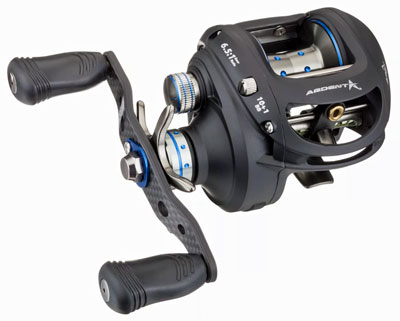
















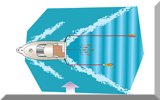

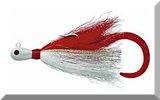
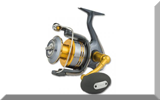
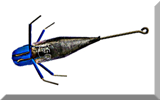
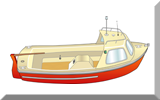
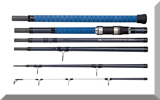
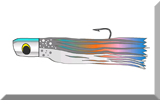
New! Comments
Have your say about what you've just read! Leave me a comment in the box below.